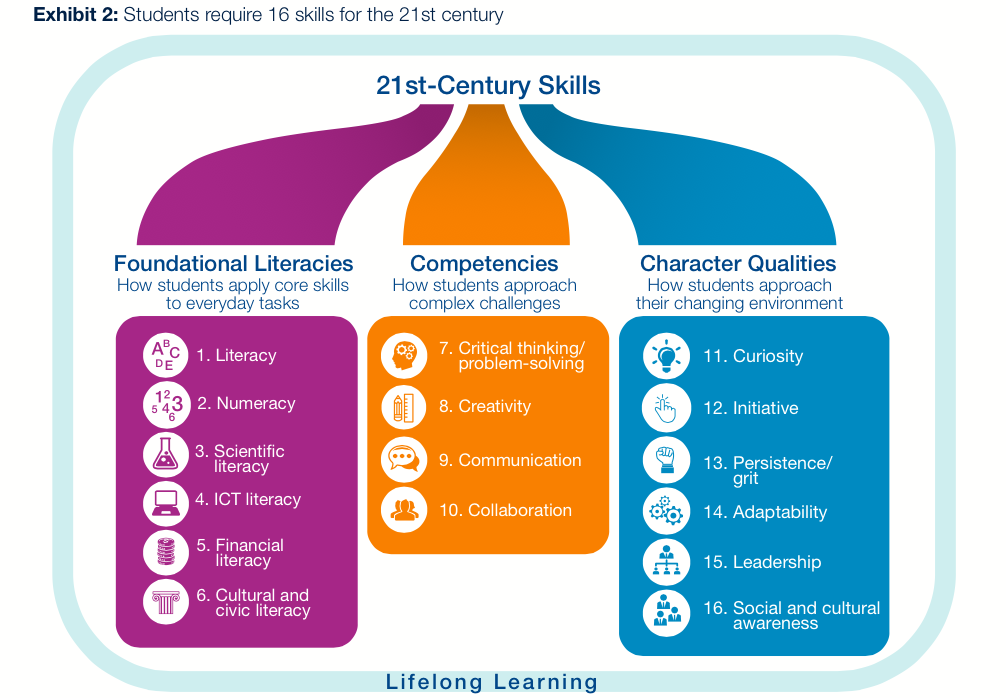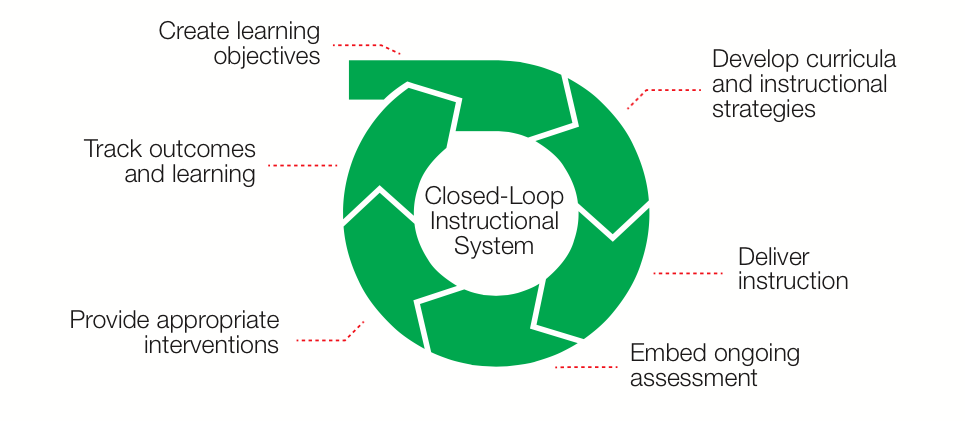A los periodistas, a los niños y a los bobos nos gustan los números redondos. Son «barreras» psicológicas que es difícil romper. De 1.000 días sin escribir en el blog no pasa. Así Carles me lo podrá echar en cara fácilmente cuando quiera.
La tecnología educativa que nos espera
El World Economic Forum (sí, esos amigos que se reúnen en Davos todos los años) ha publicado recientemente un informe titulado «Industry Agenda. New Vision for Education. Unlocking the Potential of Technology» en el que describen su visión de las competencias necesarias para los trabajadores del S. XXI y el papel que la tecnología educativa debe jugar en su consecución. Mi amigo Fernando Trujillo (@fsaez) me lo ha mandado y no puedo resistir la tentación de citar algunos fragmentos (las negritas son mías):
In this report, we undertook a detailed analysis of the research literature to define what we consider to be the 16 most critical “21st-century skills”. Our study of nearly 100 countries reveals large gaps in selected indicators for many of these skills – between developed and developing countries, among countries in the same income group and within countries for different skill types. These gaps are clear signs that too many students are not getting the education they need to prosper in the 21st century and countries are not finding enough of the skilled workers they need to compete.
Los fines de la educación están claros: competir como «skilled workers» en este valle de lágrimas.
¿Y cuáles son las «most critical» competencias? Este gráfico las resume:
Y para conseguir esa masa necesaria de «skilled workers» la tecnología educativa es esencial. ¿En qué sentido? Cito (las negritas son nuevamente mías):
Numerous innovations in the education technology space are beginning to show potential in improving education and helping address skills gaps. To help lower the cost and improve the quality of education, education technology is being used to:
- Find creative solutions to fundamental challenges in many countries, such as a lack of well-trained teachers and broadly accessible technology infrastructure
- Make education available to a broader audience at a much lower cost or provide higher quality instruction at the same price
- Enable easier scaling up of promising models within local markets and the transfer of best practices across markets in ways that can be sustained over the long term
- Gain insight into how and what students learn in real time by taking advantage of the greater variety, volume and velocity of data
- Increase teacher productivity, freeing up valuable time from tasks such as grading and testing, which can be used for differentiated teaching of competencies and character qualities.
Pero traquilos, los autores también saben qué didáctica es la más efectiva: «an instructional system known as the closed loop is necessary to address skills gaps»:
Si no fuera porque quiero ser educado diría que «el closed-loop» se parece mucho al modelo ADDIE de toda la vida y que para ese viaje, francamente, no hacen falta alforjas. Pero terminemos ya.
¿Y, como diría Quino, quién ha perpetrado todo esto? La respuesta se obtiene mirando quién son los autores del informe: el «Team», los «Advisors», los «Interviewees», etc. Como son gente muy educada no hablan de sus respectivos negocios. Eso queda feo si quieres cambiar la educación del mundo.
Dios nos pille confesados.
La insoportable levedad de los MOOC

Hace unos días la revista Computers & Education publicó un artículo (de pago) firmado por Anoush Margaryan , Manuela Bianco y Allison Littlejohn y titulado «Instructional quality of Massive Open Online Courses (MOOCs)» en el que se analiza la calidad del diseño instruccional de 76 MOOC elegidos al azar de diversas plataformas. Como instrumento se utilizó un cuestionario ad hoc basado en los «Primeros principios de la instrucción» de M. David Merrill. Las conclusiones no son nada sorprendentes. Las autoras afirman que «… the majority of MOOCs scored poorly on most instructional design principles. However, most MOOCs scored highly on organisation and presentation of course material. The results indicate that although most MOOCs are well-packaged, their instructional design quality is low».

